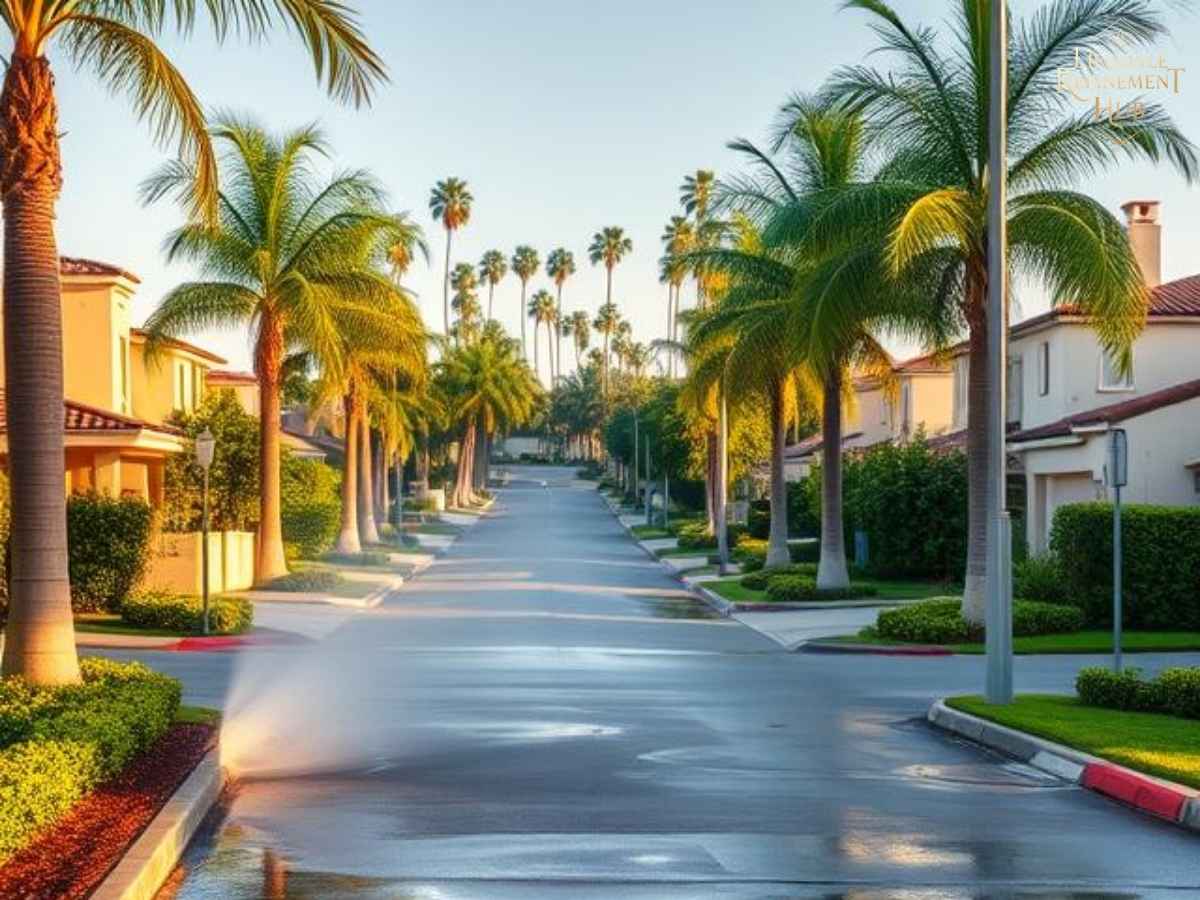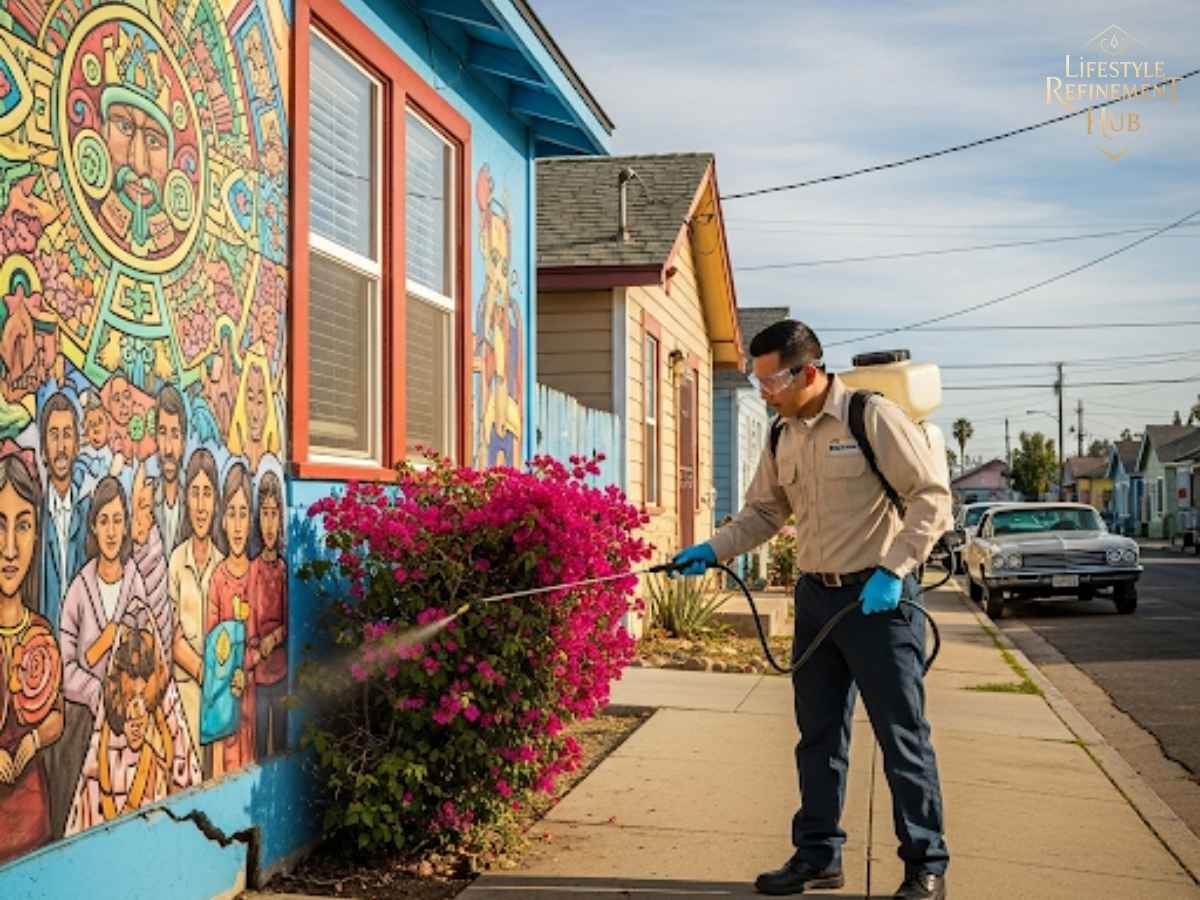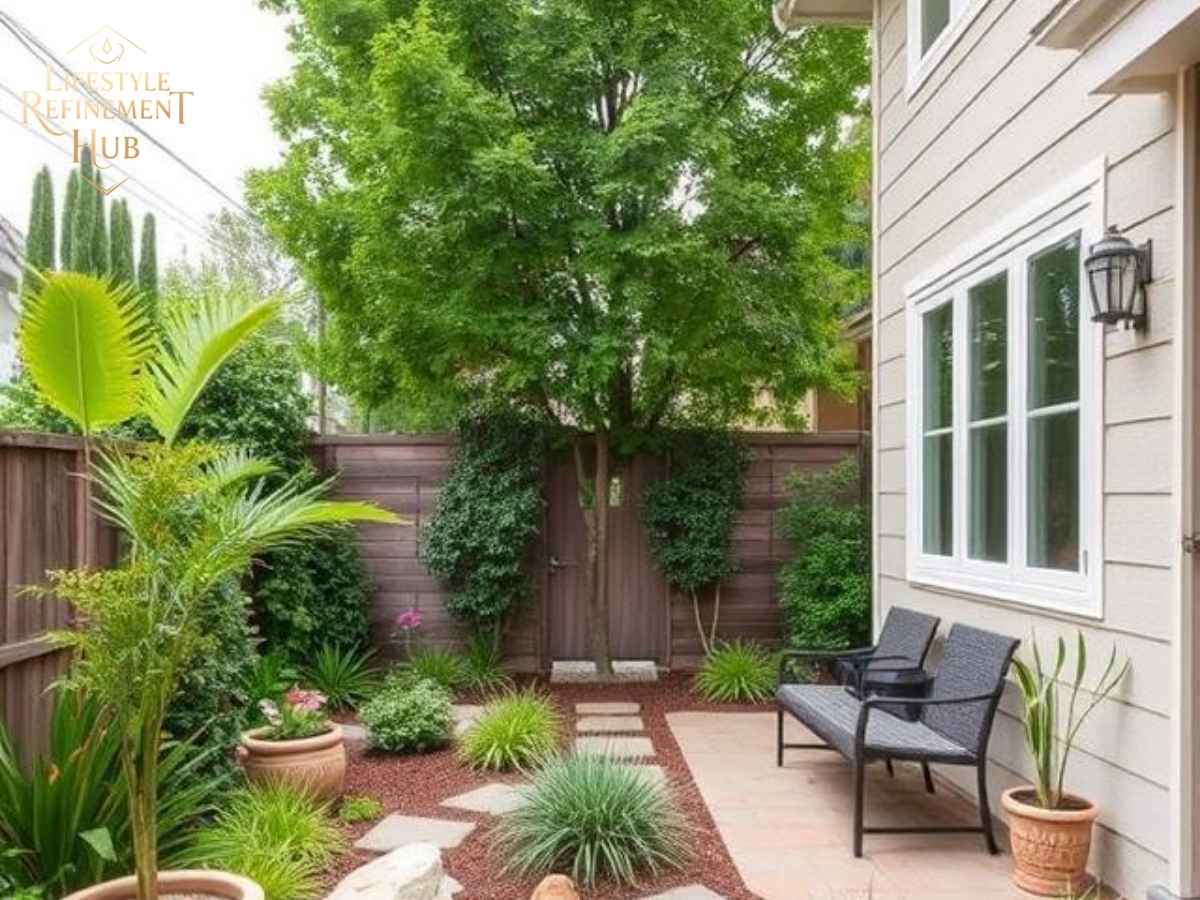There’s nothing like stepping outside to a soft, green lawn under the endless blue skies of Los Angeles. Whether you’re in Silver Lake with views of historic stairways, nestled among the bungalows of Mar Vista, or keeping things lush in Hancock Park’s historic districts, your lawn is ground zero for California living. But keeping your Los Angeles lawn thriving year-round requires strategies as dynamic as our neighborhoods and climate.
Los Angeles’ Mediterranean weather means year-long outdoor possibilities—and unique lawn care hurdles. From Santa Anas drying out your turf in October to a surprise February rainstorm in Westwood, knowing when and how to tend your grass is key. Let’s break down the local lawn care calendar to keep your yard green, resilient, and ready for anything LA throws your way.
Table of Contents
Understanding Los Angeles Lawn Challenges
Let’s be real: a traditional grassy lawn in LA isn’t as simple as it sounds. Here’s why:
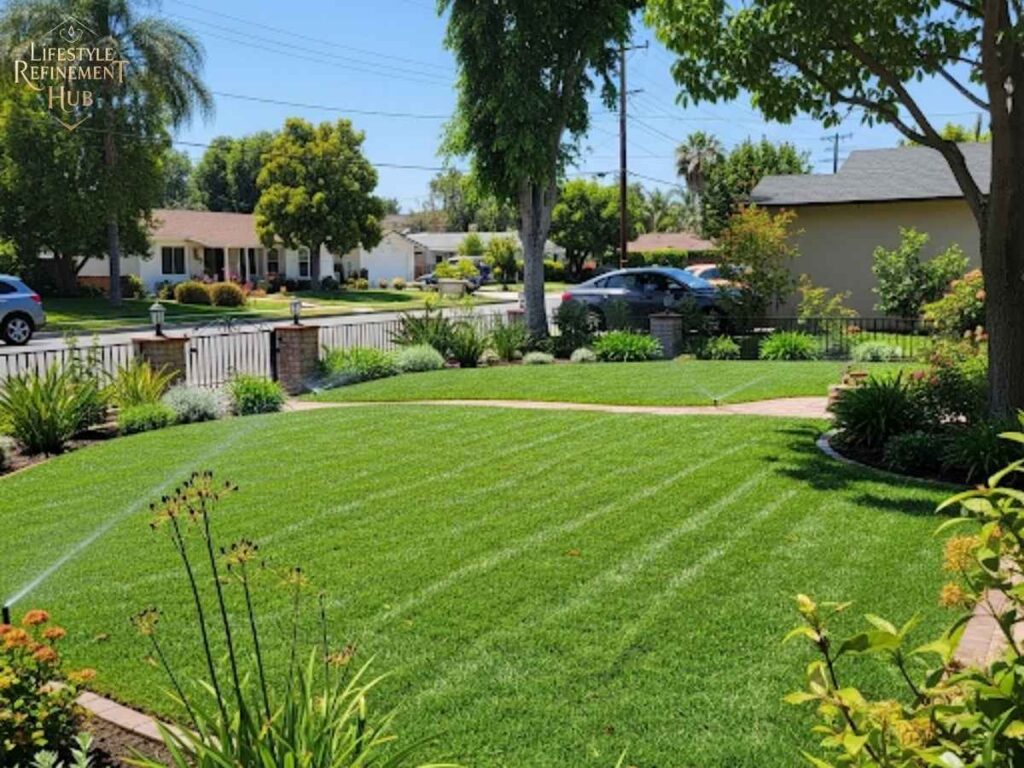
- Drought cycles, inconsistent rain: LA averages only about 14in (362mm) of rainfall yearly, 92% of it from November through April—leaving a long, dry season to battle.
- Microclimates: LA County is huge. San Fernando Valley yards see summer highs well over 100°F, while ocean breezes keep Santa Monica lawns cooler.
- Soil: Varies from sandy in the South Bay to clay-like around Pasadena, affecting drainage and nutrient retention.
- City ordinances and water restrictions: From the Model Water Efficient Landscape Ordinance (MWELO) to LADWP’s rebates, what you plant—and how you water—matters for your wallet.
LA’s pressure on lawns is real—add heavy use (picnics, pets, playdates), and you’ll see why custom seasonal care is essential.
Your Los Angeles Lawn Care Calendar
Spring (March–May): Revival and Repair
Neighborhoods spotlight: Los Feliz, Sherman Oaks, Palms
- Early Spring: Inspect for winter damage. Aerate compacted soil, focusing on front lawns in areas like Koreatown where traffic is high.
- Reseed and fertilize: Local favorites are fescue and Bermuda blends. Patch up bare spots—especially in heavy-use family backyards.
- Weed watch: Cooler and wet days spark weed growth. Pull them before they seed and spread.
- Irrigation check: Test sprinklers and adjust timers—aim for early morning watering to reduce evaporation.
Tip: The Palms Community group recommends setting sprinklers for no more than 8min per zone (2x/week) in early spring.
Summer (June–August): Survival Mode
Neighborhoods spotlight: Venice, San Fernando Valley, East LA
- Water deeply, but less often: Prioritize root growth. For hot inland spots like Woodland Hills, deep-soak 2x weekly instead of daily sprinkles.
- Raise mower height: In West Adams and similar zones, keeping grass 2.5–3in tall shades roots and conserves moisture.
- Mulch and compost: Retain moisture. LA Compost gives away free mulch—check their site for pickup spots.
- Pest vigilance: Warm weather brings lawn moths and grubs. Watch for brown patches, especially near sidewalks that radiate heat.
Tip: Venice Beach lawns benefit from early AM watering, letting grass dry before the marine layer burns off.
Fall (September–November): Reseed and Prep
Neighborhoods spotlight: Echo Park, Brentwood, Pico-Union
- Overseed: Consider overseeding with cool-season ryegrass once Labor Day passes, especially if you host family events in November.
- Feed time: Use a slow-release fertilizer to promote strong root growth.
- Leaf management: In mature neighborhoods with plenty of canopy (Brentwood, Hancock Park), rake often to prevent mold and thatch buildup.
- Aeration: Loosen soil in high-traffic areas.
Tip: LADWP offers rebates for replacing up to 1,500sqft of thirsty turf with native or drought-tolerant options.
Winter (December–February): Rest and Rejuvenate
Neighborhoods spotlight: Highland Park, South LA, Studio City
- Reduce mowing: Growth slows, so let grass grow a bit longer.
- Water only after two rain-free weeks: LA’s rainy season usually handles most needs. Use a rain gauge or check local weather apps.
- Device tune-up: Service your mower, sharpen blades, and plan for spring soil amendments.
LA lawns go semi-dormant, but stay alert—soggy lawns can attract fungal diseases. If heavy rain hits, skip watering and fix drainage if puddles persist for more than 24hours.
Real Los Angeles Lawn Care Stories
Case Study #1: Drought defeat in Eagle Rock
Sarah in Eagle Rock grew tired of brown spots and crabgrass invading her backyard. Partnering with a local landscape designer, she mixed native carex pansa grass with buffalo grass and mulched every garden bed. With deep, once-a-week watering and proper mowing, her water bill dropped by 40%. The change drew compliments, and now several neighbors are replicating her palette.
Case Study #2: Summer survival in Koreatown
Tom owns a duplex in Koreatown with a postage-stamp front yard. Previous sprinklers ran daily, but dry patches persisted. After a soil test revealed compaction, Tom aerated and reseeded, installing a smart irrigation controller. By monitoring local weather through LADWP, he shifted to twice-weekly watering in the early morning. The lawn filled in, and he qualified for a turf replacement rebate.
Case Study #3: Family-friendly renovation in Culver City
The Osorio family wanted a safe play space for their three kids and dog. Their lawn struggled with pet run spots. Working with a top LA provider (see below), they enriched the soil, added a clover-rye-grass blend, and set up perimeter beds with mulch and California lilac. Their grass now stays green into October, and the landscape rebounded with butterflies and bees.
Top 3 Lawn Care Service Providers in Los Angeles
Here are trusted names serving the LA area with stellar reputations:
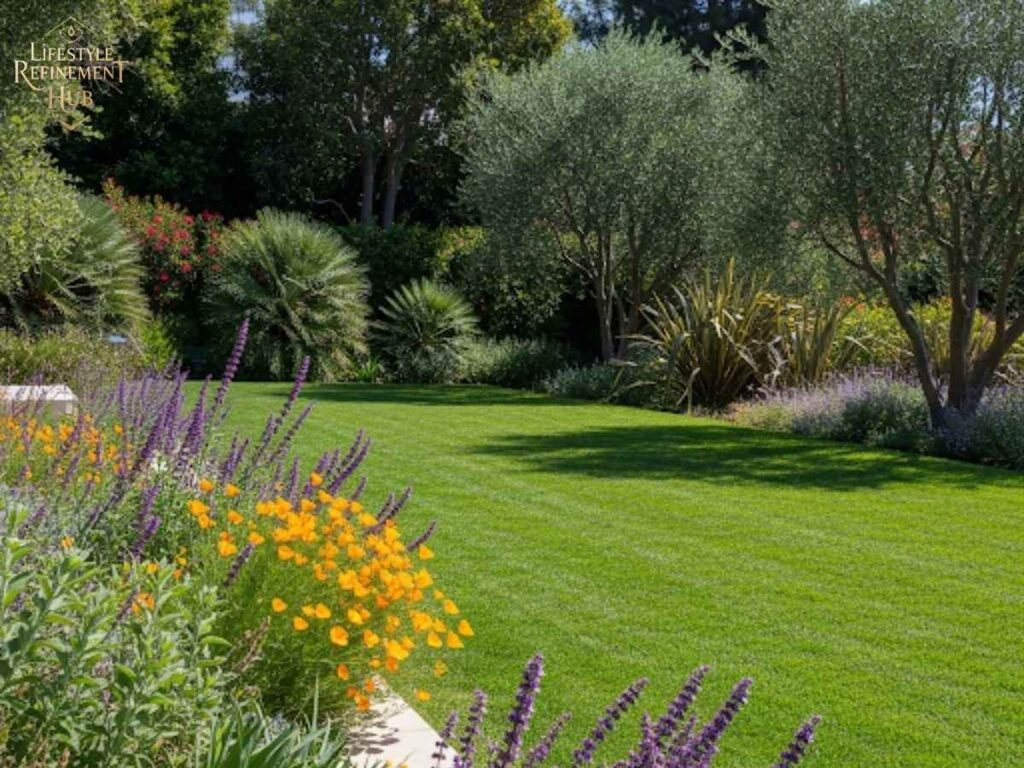
- Lawn Doctor of Los Angeles
- Profile: Decades of experience, offering custom fertilization, weed control, overseeding, soil testing, and pest control. Known for a 100% satisfaction guarantee and eco-conscious service.
- Website: lawndoctor.com
- Cali Gardening Services
- Profile: Local crew specializing in eco-friendly, drought-tolerant lawns, mulching, and regular maintenance. Prompt service and deep community roots in Eastside neighborhoods.
- Website: caligardeningservices.com
- M & M Gardening
- Profile: Family-owned, full-service landscaping pros focused on lawn rehab, irrigation installation, and seasonal care. Praised for quick response and personalized neighborhood attention.
- Website: mandmgardeningla.com
Seeking a top provider for a seasonal tune-up or ongoing care? These companies know LA’s turf inside and out.
Local Tools, Resources, and Internal Links
- LADWP California Friendly® Landscaping: Rebates and guides for swapping out water-hog turf. Great for native plant ideas and permit needs.
- Los Angeles Community Garden Council: Connect with over 47 community gardens. Expert local events and classes.
- LA Sanitation Free Mulch: Pick up mulch for gardens (mulch.lacitysan.org).
- Garden Tips for Los Angeles County: Monthly planting calendars and workshops from local Master Gardeners.
- Internal Links:
Local Permit and Utility Contacts
- LADWP: California Friendly® Landscaping
- LA County Gardening Resources: Garden Tips for LA County
- Los Angeles Community Garden Council: Find a Garden or Class
Frequently Asked Questions
What grass varieties work best for Los Angeles lawns?
A mix of fescue and Bermuda is ideal for most LA yards. For a drought-tolerant lawn, consider native grasses or buffalo grass, which require less water and perform well with LA’s long dry spells.
When is the best time to fertilize my Los Angeles lawn?
Early spring (March–April) and early fall (September) are prime times. Use slow-release formulas to avoid runoff and promote steady growth.
How can I reduce water usage on my lawn in LA?
Switch to smart irrigation timers, water before 9am, and incorporate mulch. Consider replacing some areas with native plants for extra savings and a rebate.
Are there rebates for converting lawn to drought-tolerant landscaping?
Absolutely. The LADWP offers significant rebates for replacing turf with low-water landscaping. Check LADWP’s landscaping rebate program for current offers and eligibility.
Can I grow a lawn using only collected rainwater?
In many LA neighborhoods, rainwater alone won’t sustain a grass lawn through the dry season. Supplement with efficient irrigation or pivot to a partial/lawn-and-garden hybrid using natives and groundcovers,
